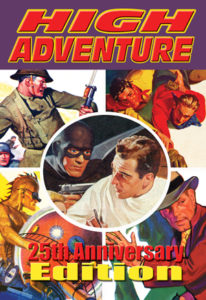 I’ve posted previously on Adventure House‘s excellent pulp reprint magazine High Adventure. It has been running for years, and is close to 175 issues. But this time we’ll look at #150, which is a double-sized, 25th anniversary issue with a wide range of stories.
I’ve posted previously on Adventure House‘s excellent pulp reprint magazine High Adventure. It has been running for years, and is close to 175 issues. But this time we’ll look at #150, which is a double-sized, 25th anniversary issue with a wide range of stories.
The attempt here was to show the wide breadth of pulp fiction by showing a variety of stories from different genres. Not all are covered, as we don’t get any railroad stories, or northwestern stories, or other genres, or even sub-genres. But we get 10 different stories. I could quible about some of the choices (I would have preferred a shorter hero story to give more room, and a detective story from a detective mag rather than a spicy), and I’m sure some of the choices made were about being public domain or not. An added bonus is we get the original illustrations.
We get the following:
- Aviation – Arthur J. Burks, “Flight of the Yellow Girdle,” Airplane Stories, 1931
- Action/Adventure – Malcolm Wheeler-Nicholson, “The Island of Forgotten Men,” Danger Trail, 1933
- Detective – Robert Leslie Bellem, “Bund Blockade,” Spicy Detective Stories, 1939
- Hero – Robert Wallace, “Murder of a Marionette,” Phantom Detective, 1944
- Science Fiction – Gardner A. Fox, “Werwils of the Crystal Crypt,” Planet Stories, 1948
- Romance – Dorothy Dow, “Bargain Husband,” Complete Love Magazine, 1942
- Western – W.C. Tuttle, “Hashknife Keeps a Faith,” Short Stories, 1944
- War – Harold F. Cruickshank, “Without Ether,” War Stories, 1930
- Weird Menace – Justin Case, “Dark Night of Doom,” Spicy Mystery Stories, 1936
- Sports – William O’Sullivan, “Troubled Waters,” Popular Sports Magazine, 1948
Now, I didn’t read every one of these stories, as I’m not interested in each of these genres. But I did take a look at them all.
With the advent of flight, aviation was a big interest with many, especially after WWI. Aviation pulps filled that, with adventures with aviators, air war, experimental aircraft, and many also had information on building and flying model planes. Some air pulps even lived on as flying-model hobby magazines. Arthur J. Burks wrote in several pulp genres, aviation being one of them, and was a former Marine officer. This piece is set in Manchuria during the “warlord” period of China, with an American pilot involved in political intrigue.
Adventure pulps were another popular genre, with stories set all over the world, and even in the past. Many of the authors of adventure pulps had either themselves traveled to the areas they wrote of, or had done extensive research. Malcolm Wheeler-Nicholson may be best known as the founder of what would become DC Comics, but before that he was a military officer and then pulp author and publisher. This one is from the short-lived Dell pulp, and is set in the Philipines.
Detective pulps were a very popular genre and, I believe, at times were one of the biggest genres. Here we get one of Bellem’s Dan Turner, Hollywood Detective stories from the “spicy pulps,” due to the hints of sex, though there wasn’t much of it in the stories. The cover and illustrations help with the hints. Here Nazi bundists are trying to stop a movie, and Dan Turner is there to stop them and figure it all out.
I haven’t posted an overview article on Thrilling’s Phantom Detective, who is the second pulp hero who outlasted both The Shadow and Doc Savage. The Phantom was really bored WWI vet and playboy Richard Curtis Van Loam, who used his detective and disguise skills to solve crimes that stumpted the police. “Robert Wallace” was a house name that hid a wide range of people. Apparently C.S. Montanye was the author of this one.
Gardner Fox is better know by most for his work at DC Comics, but he also wrote pulp stories. His story is an example of science fiction, about a space explorer awakening a woman from a long lost civilization and their fight against “the devil.”
I have to admit I’m not big on romance, and it was a big genre within the pulps. So we get an example from one from Ace Magazines’ Complete Love Magazine, a strange pulp/comic hybrid that went fully comicbook toward the end.
Westerns are another genre I’m not into. W.C. Tuttle was a prolific western pulp author, with over 1,000 works. He had several characters and this example is from his long-running Hashknife Hartley series, who also appeared in books and a radio show (which Tuttle narrated). He’s a wondering cowboy who helps folks out, as in this story, which also includes his pal Sleepy Stevens. Originally running in Adventure, it later moved to Short Stories, which is where this story appeared.
It may seem strange, but war stories were also popular, some set in WWI, but also other wars, and sometimes even future wars. Harold Cruikshank actually had helped Robert J. Hogan break into the pulp field, and was himself best known for this aviation pulp work. This one is set in WWI, in ‘no man’s land’ between the lines.
A somewhat unique to pulp genre, “weird menace,” or the shudder pulps, is a sub-genre of horror, with the hero going up against a sadistic villains with scenes of graphic torture and brutality. This is not to be confused with “weird mysteries,” where the threat is bizarre. Popular Publications started this sub-genre, followed by Thrilling and a few others. This example is from the spicy pulps, and was written by Justin Case, who was really Hugh B. Cave, who wrote many weird-menace tales and wrote a lot for the spicy pulps under that pseudonym. This is a strange, little tale of a couple returning to a family home are menaced by vampires.
Sports was another a major genre of the pulps, with stories on various team and individual sports, usually football, baseball, hockey, etc., or even fighting stories. This one is from a long-running Thrilling pulp magazine and is a story is about Olympic swimming.
This is a great collection of stories. I wonder when issues #200 comes around if we get something similar?

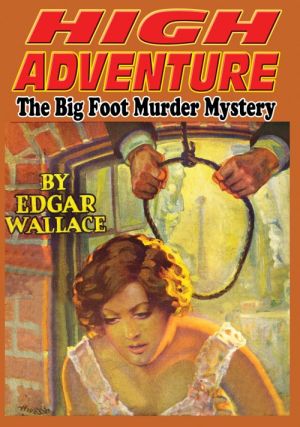
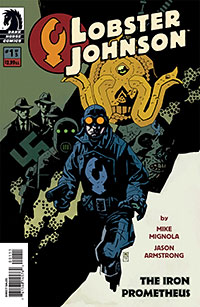
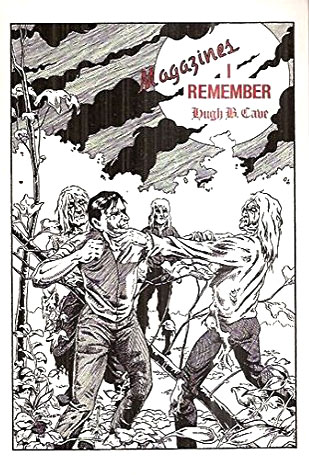
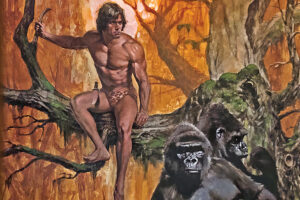

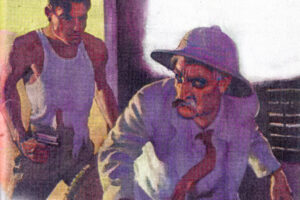
[…] Fiction (Pulp Net): I’ve posted previously on Adventure House‘s excellent pulp reprint magazine High Adventure. […]